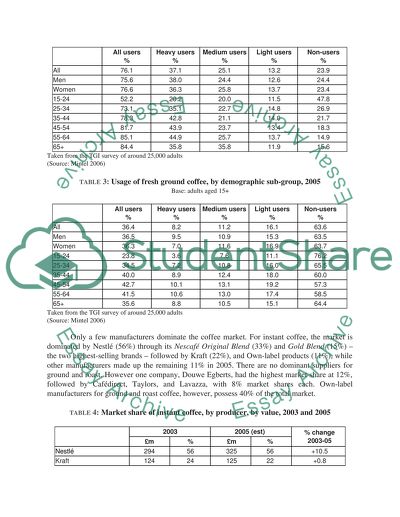Cite this document
(The United Kingdom Coffee Industry Case Study Example | Topics and Well Written Essays - 1500 words, n.d.)
The United Kingdom Coffee Industry Case Study Example | Topics and Well Written Essays - 1500 words. Retrieved from https://studentshare.org/marketing/1508642-uk-coffee-industry
The United Kingdom Coffee Industry Case Study Example | Topics and Well Written Essays - 1500 words. Retrieved from https://studentshare.org/marketing/1508642-uk-coffee-industry
(The United Kingdom Coffee Industry Case Study Example | Topics and Well Written Essays - 1500 Words)
The United Kingdom Coffee Industry Case Study Example | Topics and Well Written Essays - 1500 Words. https://studentshare.org/marketing/1508642-uk-coffee-industry.
The United Kingdom Coffee Industry Case Study Example | Topics and Well Written Essays - 1500 Words. https://studentshare.org/marketing/1508642-uk-coffee-industry.
“The United Kingdom Coffee Industry Case Study Example | Topics and Well Written Essays - 1500 Words”, n.d. https://studentshare.org/marketing/1508642-uk-coffee-industry.


